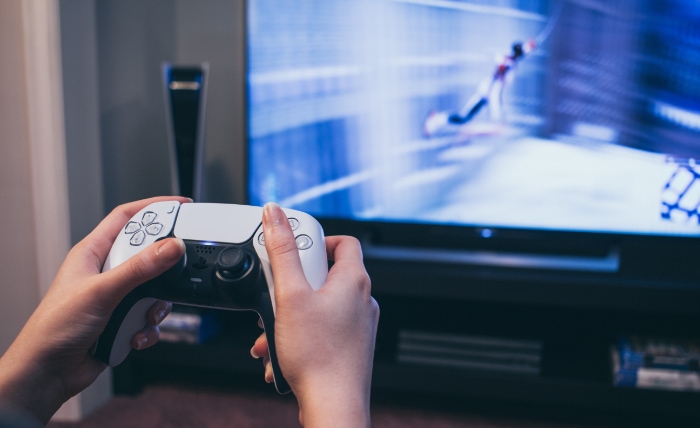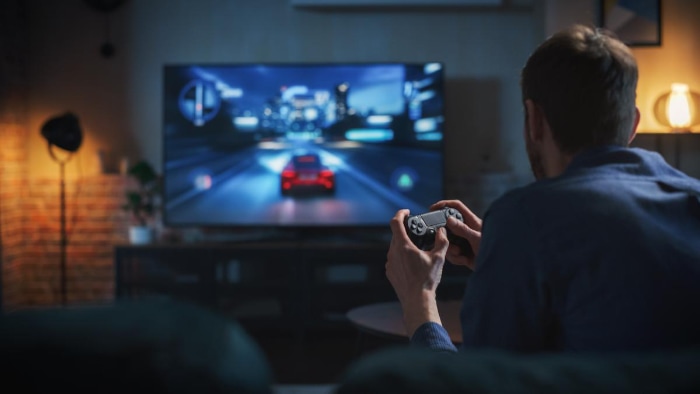How to Fix Sticky Buttons on a Controller: Step-by-Step

For many gaming enthusiasts, the controller is an extension of their own hands, allowing them to navigate virtual worlds, compete in fierce matches, and experience stories in immersive ways. It’s surprising that such a crucial tool can occasionally fall prey to something as innocuous as a sticky button.
This seemingly minor issue can drastically affect gameplay, interrupting smooth movements and delaying reactions. But what causes these sticky buttons? More importantly, how can one fix them without resorting to buying a new controller?
Why Do Buttons Become Sticky?
Game controllers, despite their sturdy appearances, are delicate instruments that interact with the environment more than we might realize. When a button starts sticking, it’s not just an annoyance—it’s a testament to the various factors that can impact a controller’s functionality.
Let’s explore some of the main reasons why buttons become sticky and hinder our gaming experience.
Accidental Spills
We’ve all been there. Immersed in a game, we might have a drink by our side for those short breaks.
But one accidental knock, and liquids can find their way into the crevices of our controllers. Sugary drinks, like soda or juice, are especially troublesome. As the liquid dries, it leaves behind a residue that can cause the buttons to stick.
Dirt and Dust Accumulation
Over time, the environment plays its part. Dust and tiny dirt particles, often invisible to the naked eye, settle on and around the buttons.
With repeated pressing during gameplay, some of this debris can get trapped underneath the buttons, causing them to stick.
Wear and Tear
Every piece of equipment has a lifespan, and game controllers are no different. Repeated use can wear down the components, especially if pressed excessively. This can change the way buttons return to their original position, making them feel sticky or less responsive.
Sweat and Skin Oils
Gaming can be intense, leading to sweaty palms. The natural oils and sweat from our skin can transfer to the buttons and build up over time.
This not only attracts more dirt but can also lead to a gummy layer forming on or around the buttons.
Food Residue
It’s not uncommon to snack while gaming. Crumbs, oils, and other residues can end up on the controller. Even if you wipe it down, tiny particles can remain, working their way into the small spaces around the buttons, eventually causing them to stick.
Safety First
Safety should always be the top priority when addressing issues with any electronic device, including game controllers. Before digging into fixes, it’s essential to familiarize oneself with precautionary steps to avoid any potential harm or further damage to the device.
Disconnect the Controller
Before you start any cleaning or maintenance, always disconnect your controller. If it’s a wired controller, unplug it from the console or PC.
For wireless controllers, switch it off and ensure it’s not connected to any device.
Remove Batteries
For those controllers powered by batteries, always remove them before attempting any fixes. This not only safeguards against accidental activation but also ensures there’s no risk of short circuits or other electrical mishaps.
Work in a Well-Ventilated Area
If you’re using cleaning agents, especially ones with strong fumes like isopropyl alcohol, it’s crucial to work in an area with good air circulation. This prevents the buildup of potentially harmful fumes and ensures you’re not inhaling any chemicals.
Avoid Using Excessive Liquid
While some cleaning solutions may require the use of liquids, it’s important to use them sparingly. Excessive moisture can seep into the controller’s internal components, leading to potential damage.
Always ensure that cloths or cotton swabs are damp, not wet.
Handle with Care
Controllers contain delicate parts that can be easily damaged if handled roughly. When disassembling or reassembling, ensure you’re gentle, avoiding unnecessary force which could break or misalign components.
By keeping these safety guidelines in mind, you’re not only ensuring the longevity of your controller but also your own well-being. A methodical, careful approach will always yield the best results, allowing you to get back to gaming without any hitches.
Materials Needed
When embarking on the task of fixing sticky buttons on a game controller, having the right tools and materials at your disposal can make the process smoother and more effective. While many of these items are commonly found around the home, gathering them beforehand is always a good idea.
Soft Cloth or Microfiber Cloth
A gentle cloth is essential for wiping down the exterior of your controller. Microfiber cloths are especially effective, as they can pick up and remove fine particles of dust and dirt without scratching the controller’s surface.
Isopropyl Alcohol
Preferably 70% concentration or higher, isopropyl alcohol is an excellent cleaning agent for electronics. It’s effective in breaking down sticky residues and evaporates quickly, reducing the risk of moisture damage.
Cotton Swabs/Q-tips
These are essential when it comes to detailed cleaning. Their slender structure allows for precise application of isopropyl alcohol, especially around the edges of buttons or in tight crevices.
Small Bowl or Container
This can be used to hold a small amount of isopropyl alcohol, making it easier to dip and moisten the cotton swabs without spilling or wasting the solution.
Toothpicks or Small Brush
For particularly stubborn dirt or debris that’s lodged in narrow spaces, a toothpick or a small brush can be used to gently dislodge and remove it. Ensure that you’re careful to avoid causing scratches or damage.
Basic External Cleaning

The exterior of a game controller, being in constant contact with hands, is often the first to accumulate dirt, grime, and other residues. Regular external cleaning not only keeps your controller looking and feeling new but also prevents deeper issues, like sticky buttons.
Wipe Down the Controller
Start by taking your soft or microfiber cloth and gently wiping the entire surface of the controller. This initial sweep will remove any loose dust or dirt particles.
For controllers with a textured grip or pattern, ensure you follow the contours to pick up all the debris.
Focus on the Buttons
Using a slightly damp cloth, apply gentle pressure to clean the top and sides of each button. Move in circular motions to ensure you’re covering the entire surface.
This will help remove any fingerprints, oils, or light residues that might have settled on the buttons.
Clean Tight Spaces and Crevices
Dip a cotton swab in your isopropyl alcohol and gently wring out any excess to ensure it’s damp but not dripping. Carefully clean around the edges of buttons, the D-pad, thumbsticks, and any other tight areas where dirt can accumulate.
The alcohol will help break down sticky residues, and its quick evaporation rate will minimize moisture exposure.
Addressing the Ports and Vents
Dust and lint can easily get trapped in the charging ports, headphone jacks, or ventilation slits. Using a dry cotton swab, gently clean these areas, ensuring you don’t push the debris further in.
Allow to Dry
After cleaning, let your controller sit for a few minutes in a well-ventilated area. This ensures any residual moisture from the isopropyl alcohol evaporates completely before you use the controller again.
Regular external cleaning is an easy yet effective way to prolong the life of your controller and maintain an optimal gaming experience. By incorporating these steps into your routine, you’ll ensure your controller is always ready for action.
Prevention Tips
Ensuring the longevity and optimal functionality of a game controller goes beyond occasional cleaning. Adopting preventive measures can drastically reduce the chances of encountering sticky buttons or other issues.
By integrating these habits into your gaming routine, you can keep your controller in top condition for years to come.
Wash Hands Before Use
It might seem basic, but washing your hands can make a significant difference. By doing so, you remove oils, sweat, and any dirt that could transfer to the controller.
This not only keeps the device cleaner but also reduces the chances of debris getting lodged in the button spaces.
Safe Storage
When not in use, store your controller in a dust-free zone or a protective case. Exposure to open air can lead to dust accumulation, which over time can infiltrate the spaces around the buttons.
Consider purchasing a dedicated controller stand or case for added protection.
Avoid Eating or Drinking While Playing
One of the primary causes of sticky buttons is the accidental spill of drinks, especially sugary ones, or food residue. By keeping food and beverages away from your gaming area, you eliminate the risk of unexpected spills and crumbs.
Use Protective Skins or Covers
Many companies offer protective silicone skins or covers specifically designed for various controller models. These not only provide a better grip but also act as a barrier against sweat, dirt, and minor spills.
Regular Quick Cleans
Even if your controller doesn’t look dirty, giving it a quick wipe down after every few uses can prevent the buildup of dirt and grime. A soft cloth or microfiber cloth can quickly remove any potential residues.
Be Gentle
While it’s easy to get carried away in the heat of gameplay, being gentle with your controller can extend its life. Forcefully pressing buttons or dropping the controller can lead to internal and external damages.
Incorporating these preventive measures into your gaming habits can save you both time and money in the long run. After all, a well-maintained controller not only performs better but also enhances the overall gaming experience.
Conclusion
As the primary interface between a player and the virtual world, a game controller deserves diligent care and maintenance. Sticky buttons or other malfunctions can interrupt an immersive experience, potentially causing frustration or impacting gameplay.
While addressing these issues is essential, adopting proactive measures can often prevent them in the first place. Regular cleaning, safe storage, and mindful usage can significantly extend a controller’s lifespan and ensure smooth, uninterrupted gaming sessions.
By investing a little time and effort into your controller’s upkeep, you guarantee a more reliable and enjoyable connection with your virtual adventures.


